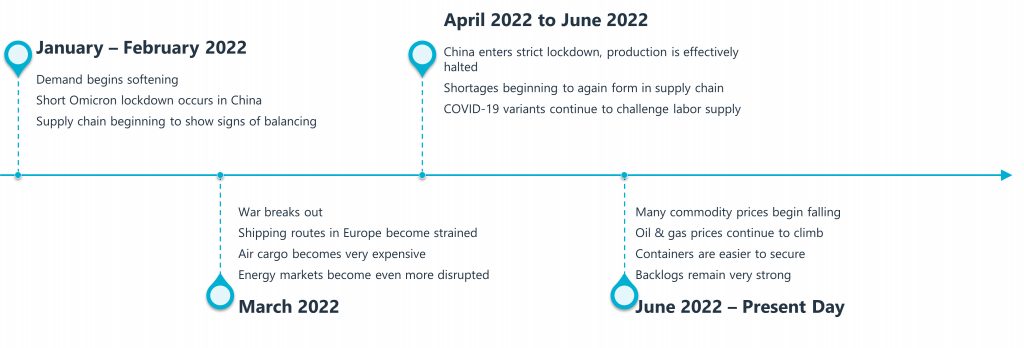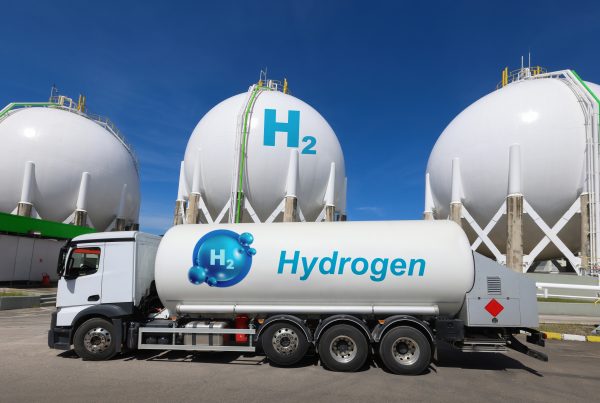商用车
2022-09-15
叉车制造商面临地缘政治风险

MAYA XIAO
Maya在电动汽车、自动化系统和机器人领域拥有跨学科的技术背景,现担任Interact Analysis的研究经理,负责锂离子电池、叉车、工业和协作机器人市场等研究。
As with almost every industry, supply chain constraints due to COVID-19, coupled with the current geopolitical climate have created a perfect storm for forklift manufacturers. Our new research has downgraded the forecast forklift shipment growth for 2022.
In this insight, we will discuss how and why current international problems have strained the market.
Supply Chain Chaos
Supply chain issues are a continuing and costly by-product of the pandemic. Significant order backlog continues to be a problem for most forklift manufacturers where lead times have become longer than ever. In 2021, manufacturers reported an all-time high in the gap between order volume and shipment rates. The global shipment growth rate in Q4 2021 was only 6.9%, much lower compared to the first three quarters in 2021. The pressure still exists in 2022, coupled with the impact of the Russia/Ukraine conflict, inflation and interest rate increases, order backlog caused delivery times to rise to 6-12 months or even longer in some regions. Furthermore, as a result of worker strikes and the resultant pressure on logistics networks, export costs have risen exponentially, forcing forklift manufacturers to increase their prices.
The huge order backlog will remain a significant restraint out to the end of 2022, meaning that demand will continue to grow but supply will not keep up. Because suppliers are still processing 2021 orders, order intake for 2022 is likely to be flat. Meanwhile, 2022 shipment growth will not be much lower than the 2021 level of 8.9%.
It was originally thought that supply chain problems would only present a problem for the first half of 2022 but the Russia-Ukraine conflict and the COVID outbreak in China have aggravated the situation. China is the main market for forklifts meaning the COVID outbreak has had and will continue to have a severe impact on this market. Shanghai and Shenzhen are the main centers for R&D as well as manufacturing, was also the hardest hit cities. Not only this but Shenzhen, along with Shanghai are important port cities further exacerbating the shipping crises.

Supply chain woes put a dampener on the forklift market outlook.
The macroeconomic outlook is in tatters
The World Bank had previously lowered its forecast for global economic growth in 2022 to 2.9%, down from 5.7% in 2021, and warned of the risk of “stagflation”. Growth is also expected to hover around 3% from 2023 to 2024, mainly as a result of inflationary pressures, the Russia-Ukraine war and repeated covid outbreaks. As recently as January it was assumed that 2022 growth would be 4.1%.
In the short term, it will have a greater impact on the manufacturing industry, which will undoubtedly have an impact on the forecast for the forklift industry. Although global inflation will stagnate in 2023, it will remain high in many countries, it is likely that the economy will experience a sharp downturn and many developing countries will experience financial crises.
Final Thoughts
It’s safe to say that the current geopolitical and economic climate has created significant uncertainty for forklift manufacturers. Just as they thought recovery from the pandemic was on the horizon, inflation, rising costs and supply chain woes hit, all of which are likely to remain serious problems in the near future. Developing economies are likely to be the hardest hit but things won’t all be rosy for the established markets (such as the US) either. Forecast levels for the forklift market are set to stabilize for the next 10 years with a short-term growth decline in 2022 and 2023 in response to the supply chain pressures.
Stay tuned for the next article which will discuss how the forklift market is likely to respond to these global pressures.
Contact Maya Xiao, Senior Analyst and author of the Forklift market report to continue the discussion.


